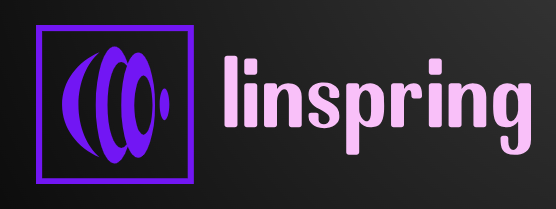I te wa e whiriwhiri ana i nga puna mo to kaupapa, one of the first decisions you'll need to make is whether to go with custom springs rānei standard springs. Both options have their advantages and drawbacks, and the right choice depends on your specific needs, application, and budget. In this guide, we’ll explore the differences between custom and standard springs and help you determine which option is best for your project.
1. What Are Standard Springs?
Standard springs are pre-designed springs that follow industry specifications and are typically available off the shelf. These springs are commonly used in a wide variety of applications, from automotive and industrial machinery to consumer electronics.
Advantages of Standard Springs:
- Lower Cost: Since they are mass-produced, standard springs are often more affordable than custom-made options.
- Quick Availability: Standard springs are readily available, so you can usually get them faster than custom springs, making them ideal for projects with tight timelines.
- Proven Reliability: Because they are designed to meet common industry standards, standard springs have been tested and proven to perform reliably in various applications.
When to Use Standard Springs:
- If your project has common spring requirements (E.g., typical sizes, utaina te kaha, and materials).
- When you're working with a high volume of similar applications or need quick replacements.
- When the spring’s performance requirements are within the limits of industry-standard options.
2. What Are Custom Springs?
Custom springs are made-to-order components designed to meet specific requirements that may not be addressed by standard spring options. Custom springs are tailored to the exact dimensions, Rauemi, and performance characteristics that your project needs.
Advantages of Custom Springs:
- Tailored to Your Exact Needs: Custom springs are designed to meet unique specifications, such as unusual dimensions, specific load capacities, and special materials or coatings.
- Optimized Performance: Custom springs can be optimized for your application’s exact performance criteria, ensuring greater efficiency, mauroa, and reliability.
- Better Fit for Complex Applications: If your project involves non-standard requirements (E.g., special geometric shapes, high-tension loads, or environmental factors like extreme temperatures or corrosive environments), custom springs are a better fit.
When to Use Custom Springs:
- When your project requires specific dimensions, Rauemi, or configurations that cannot be met by standard springs.
- If you're working on a high-performance application that requires precision or unique spring characteristics (E.g., Aerospace, medical, or automotive industries).
- When you’re designing specialized equipment or machinery that demands unique spring characteristics for optimal performance.
3. Key Differences Between Custom and Standard Springs
Here’s a breakdown of the primary differences between custom and standard springs:
| Āhuatanga | Nga Puta Paerewa | Puta Ritenga |
|---|---|---|
| Cost | Lower cost due to mass production | Higher cost due to design and customization |
| Availability | Readily available off-the-shelf | Lead times vary based on design and manufacturing |
| Customization | Limited to pre-defined sizes and designs | Fully customizable to meet exact specifications |
| Performance | Suitable for general applications | Tailored to specific performance requirements |
| Lead Time | Fast delivery | Longer lead times due to custom design and manufacturing |
| Application Scope | Ideal for common applications | Best for specialized, complex, or high-performance applications |
4. Factors to Consider When Choosing Between Custom and Standard Springs
When deciding between custom and standard springs, several factors will influence your decision. Here’s a list of key considerations:
1. Performance Requirements
- Nga Puta Paerewa: If your spring only needs to handle standard loads, tensions, or temperatures, a standard spring should suffice.
- Puta Ritenga: For specialized performance—such as handling extreme loads, vibrations, or environmental conditions—custom springs are necessary.
2. Budget
- Nga Puta Paerewa: If you’re working with a tight budget, standard springs are usually the more cost-effective option.
- Puta Ritenga: Custom springs are typically more expensive due to the design and manufacturing processes involved, so be prepared for higher costs, especially for small quantities.
3. Project Timeline
- Nga Puta Paerewa: They are readily available and can be shipped quickly, making them ideal for projects that require a fast turnaround.
- Puta Ritenga: Lead times can be longer since the springs need to be designed, prototyped, and manufactured to your specifications. Hoianō, this is not an issue if you have a flexible timeline.
4. Quantity
- Nga Puta Paerewa: Best for projects that require large quantities of the same spring, as they are mass-produced and stocked in large volumes.
- Puta Ritenga: Ideal for low-volume or unique applications, especially when you need a single prototype or a small batch of springs tailored to your needs.
5. Complexity of the Application
- Nga Puta Paerewa: Perfect for simple, straightforward applications.
- Puta Ritenga: Necessary for complex or highly specialized applications where off-the-shelf solutions won't suffice, such as aerospace, Nga taputapu rongoa, or custom machinery.
5. Whakamutunga: Which Option Is Right for You?
Both custom springs me standard springs offer distinct advantages depending on your project’s specific needs. Here's a quick summary to help you decide:
- Choose Standard Springs if you need a cost-effective, readily available solution for general applications, and your performance requirements fall within common industry standards.
- Choose Custom Springs if your project requires specialized materials, dimensions, or performance characteristics that cannot be met by standard springs. Custom springs are ideal for complex applications, unique designs, or high-performance projects.
If you're unsure which option best fits your project, consulting with an experienced spring manufacturer like linspring can help you make an informed decision. They can guide you through the process, from choosing standard springs to designing custom solutions that meet your exact specifications.
Need help selecting the right spring? Contact us today to discuss your project requirements and find the best spring solution for your needs!
